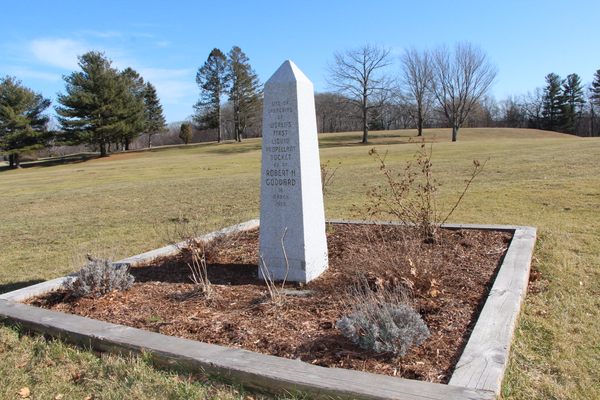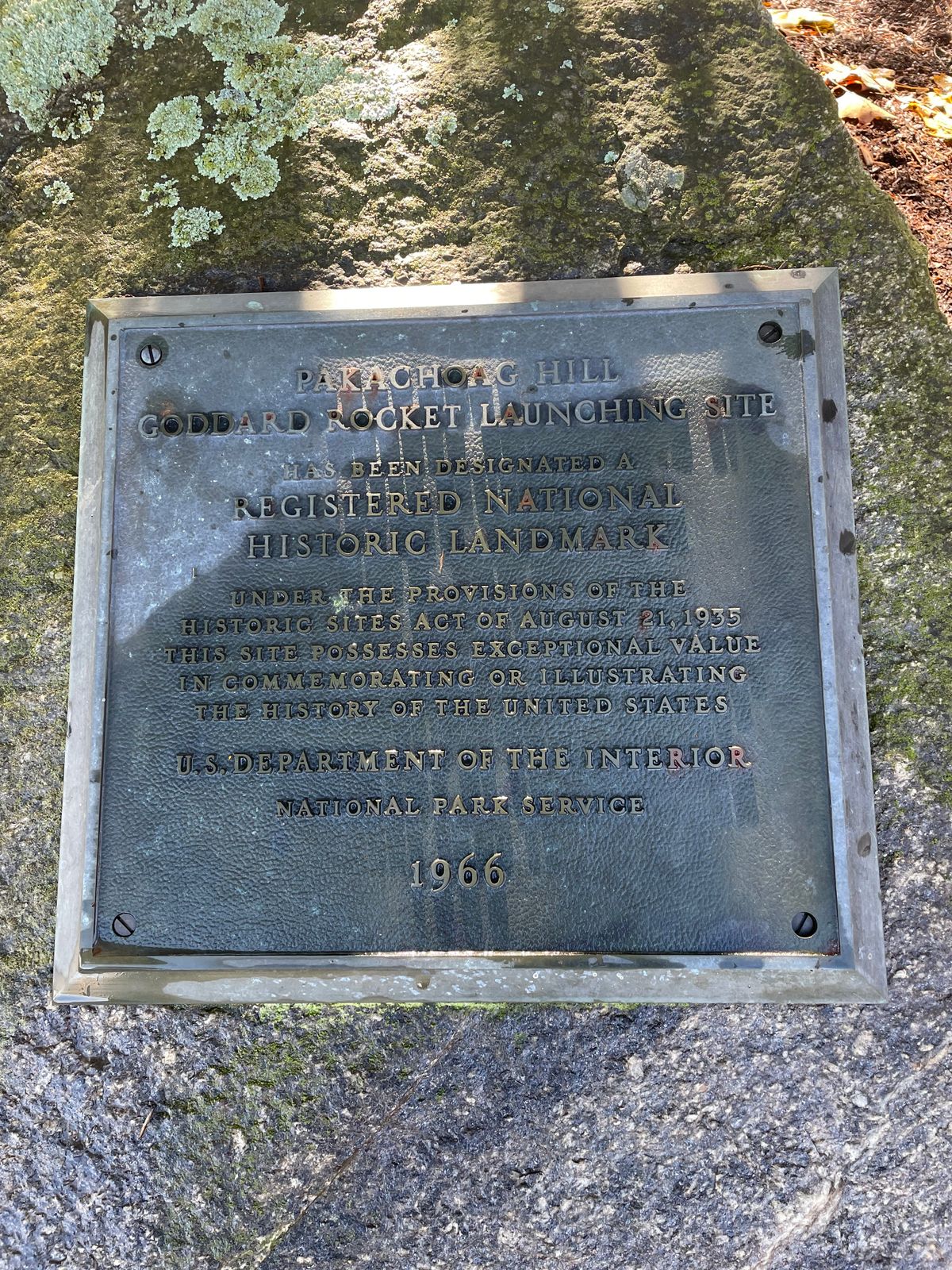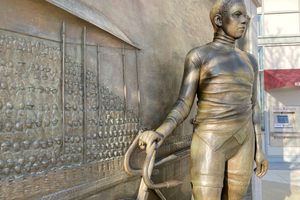About
On the cold snowy day of March 16, 1926, Dr. Robert H. Goddard stood in the vast open field of then Asa Ward Farm and made the final preparations. A large metal frame housing a 10-foot (three-meter) rocket and ready for launch. Rockets were hardly a new invention and have been around for centuries. However, the rocket Goddard was launching was different as it was not propelled by gunpowder, but by liquid fuel and the first of its kind.
The launch was a resounding success, with the rocket reaching an altitude of 41 feet (12 meters). It flew for about two-and-a-half seconds and landed 184 feet (56 meters) from its launching frame. Goddard launched another rocket on July 17, 1929 with the 11-foot (3.4 meter) rocket reaching an altitude of 90 feet (27 meters), flew for 18.5 seconds, and covered a distance of around 171 feet (52 meters). The rocket was also carrying a barometer, thermometer, and a camera which activated when the parachute was deployed and all three instruments were recovered successfully.
Although Goddard's rocket might seem small and perhaps even amateurish by today's standards, it was truly a revolutionary innovation for its time. His work laid the foundation for modern rockets including the V-2 missile deployed by Germany during the Second World War, the Saturn V rocket that carried the Apollo 11 mission members to the moon, the Space Shuttle Discovery that launched the Hubble Space Telescope, and the Delta II rocket that placed the first robotic rover, the Opportunity, on the surface of Mars.
If you are fascinated by the science of rocketry and interested in the history of space exploration, the Goddard Rocket launch site is definitely worth visiting.
Related Tags
Know Before You Go
The obelisk is located on the Pakachoag Golf Course, right next to a small park. There is parking directly across the road.
Published
January 4, 2022
































